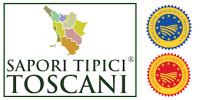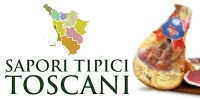Chianciano Terme
Of Etruscan origins, Chianciano Terme is a small town immersed in the green Tuscan hills to the south of Siena, between Val d’Orcia and Val di Chiana, not far from the border with Umbria. A number of historians indicate that in antiquity Chianciano was known as Clancianum, meaning “this side of the Chiana”. The first documents in which the name Chianciano appears date from the 12th century, however: an 1171 act of donation and a document from 1230 in which the town is referred to as a Comune.

Chianciano Terme (Siena)
During the Middle Ages Chianciano Terme was for many years under the governance of the Counts Rimbotti-Manenti (1230-1280), who were eventually deposed and expelled after having successfully reduced the village to poverty.
In 1287 Chianciano became a free comune and divided into districts/classes known as Terzieri. The Terziero dei Borghesi was made up of traders and businessmen. Then there were the Terziero dei Militi o Cavalieri and the Terziero dei Pedoni, which was composed of craftsmen, farmers and servants. After a period of relative prosperity, in the 15th and 16th century Chianciano once more fell on difficult times. Rivalry with nearby Montepulciano added to the devastation brought in 1476 by an outbreak of the Plague, which followed an earlier outbreak in 1348. Eventually the town was conquered by Florentine troops and rebuilt under Cosimo I de’ Medici.
Following research carried out in the 17th century by the hydrologist Andrea Baccio, Chianciano began to be appreciated for the curative effects of its waters. With the building of the first spa centres, the town’s development became inextricably tied to its thermal baths. Today Chianciano is one of Europe’s best known spa towns. Its mild climate and idyllic position are the perfect setting for the many villas and gardens that have sprung up here, not to mention a number of modern hotels that are equipped to cater for the growing numbers of tourists that come here every year, attracted by the possibility of enjoying an alternative form of holiday that caters for both body and mind.
With its three different thermal water springs – Santa, Fucoli and Sillene – Chianciano is unique as a spa town. The Acqua Santa emerges from the soil at a temperature of 33°C and is particularly indicated for disorders of the liver and bile ducts, as well as for chronic gall bladder inflammations and for improving digestion. The Acqua Fucoli emerges at a temperature of 16.5°C and is excellent for rebalancing the intestines, activating diuresis and reducing inflammations of the gastro-duodenal mucosa. The Acqua Sillene, which some believe is named after the Etruscan god Sethlas, others after Silla, emerges at a temperature of 38.5°C and is mainly used for mud therapy around the liver and for immersions. Sant’Elena, at 13°C, is another spring also at Chianciano and indicated for conditions of the kidneys and stomach infections. This water increases diuresis and improves digestion.
From Chianciano Terme, Viale della Libertà leads to the old village of Chianciano within the walls. Porta Rivellini opens onto the castle of the Conti Manenti, better known as the Monastero. At the end of the street rises the Torre dell’Orologio, which commands magnificent views over the surrounding countryside, as far as the snow-capped peaks of Monte Cetona and Monte Amiata. After the clock tower there is the main square, Piazza Matteotti, where there is also the Associazione Geo-Archeologica. A number of works have been carried out in recent years in an effort to improve communication between the old village and the new spa town – two quite different entities that nonetheless share a common historical and artistic heritage.
• Siena in the Renaissance
• Siena in the Middle Ages
• Siena in Antiquity
• Town Map Siena
• Farm Holidays and Country Houses
• Residence, Apartments
• Bed & Breakfasts
• Historical Residences
• Last Minute Siena
• Restaurants
• Pubs & Wine Bar
• University for Foreigners
• Palazzo Chigi-Saracini
• Palazzo d’Elci degli Alessi
• Loggia della Mercanzia
• Palazzo Sansedoni
• Palazzo Chigi-Zondadari
• Fonte Gaia fountain
• Carthusian Monastery of Pontignano
• Forte di Santa Barbara
• The Duomo – The Cathedral of the Assunta
• Church of the Osservanza
• The Oratory of San Bernardino
• Church of San Francesco
• Short Biography of St Catherine of Siena
• St Catherine Sanctuary
• Church of S. Niccolò al Carmine
• Bologna-Buonsignori museum
• Accademia dei Fisiocritici
• I Musei Senesi
• The Palazzo Pubblico and the Torre del Mangia
• Piazza del Campo
• The Montagnola Senese and the Fortified Village of Sovicille
• The Castles of Belcaro and Quattro Torri
• The July and August Palio
• The Contrade
• The Days of the Palio
• The Drappellone
• The Eve of the Palio
• The Corteo Storico Procession
• The Race
• The Patron Saint and Oratory of Each Contrada
• Weekly Appointments in each Contrada from April onwards
• Croce del Travaglio Place
• From Piazza del Campo to the Duomo Along Via di Città
• The Curves of Piazza del Campo
• Costarella dei Barbieri street
• Borgo d’Ovile
• The Terzo of Camollia – main streets
• Casato di Sopra e Casato di Sotto
• Terzo di San Martino district
• The Terzo di Città District - Via Stalloreggi, Via San Quirico
• The Terzo di Città District – The Pinacoteca Nazionale
• Golf courses in Siena and Tuscany
• Wedding in Tuscany - Siena area
• San Casciano dei Bagni
• Chianciano Terme
• Bagni San Filippo
• Bagno Vignoni
• Rapolano Terme - Baths of San Giovanni and Baths of the Antica Querciolaia
• The Countryside around Siena and its Thermal Water Springs
• SkiPass Monte Amiata
• WebCam sul Monte Amiata
• Meteo Monte Amiata
• The Val d’Orcia and Its Main Towns
• Pienza - the old town centre
• Montepulciano - the old town centre
• San Quirico d’Orcia - the old town centre
• Montalcino and the Land of Brunello
• The Abbey of Monte Oliveto Maggiore and the Crete
• The Crete Senesi
• Castellina in Chianti and the Via Chiantigiana Towards Siena
• Siena and Southern Chianti - from the Castle of Montalto to the Castle of Brolio and on to the Castle of Meleto
• The Chianti Hills - Monte Calvo, Monte Luco and Monte San Michele
• Cortona and the Valdichiana
• San Gimignano - The old town centre and its major sights
• The Val d’Elsa - Monteriggioni and Colle di Val d’Elsa
• Along the Old Via Francigena
• Oleum Evo online selling
• Sapori Tipici Italiani buy online now
• il Prosciutto Cotto









